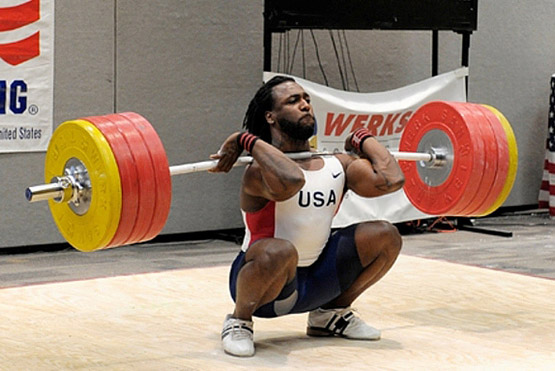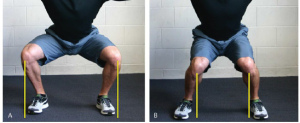Setbacks
Reversals or delays in progress, setbacks certainly happen... and more often than we'd like.
Success in and outside of the gym occurs on a monthly basis. If you've been putting in hard work, you already know this. Look where you are compared to where you started; how far have you come?
No matter the length of your fitness journey, or how small the results, there are definitive accomplishments. Maybe it's been a recent PR in a barbell lift, maybe gymnastics movements are coming along more efficiently, or maybe nutrition habits have been on point and you've reaped the benefit of correctly fueling before and after workouts.
So, the gym life is cruising along, and then bam... a huge wall of reality hits and a setback stops us dead in our tracks. Or worse, we're knocked backwards, reeling from a bad day or an off week, our world of fitness suddenly smashed and leaking like a spilled milkshake. All that tasty goodness reduced to mere ant food.
Panic sets in, because that's how we are-- we worry that all previous gains are lost. What strength or skill we used to have will never return. What clicked before will now evade us forever.
So how can we use setbacks in a positive vein? How do we see past any stalls in personal training to maintain headway? Is it possible to have any good come from the bad?
Yes and no.
It is resiliency that can foster success. But it's also crucial to realize our limitations to best spend our time and energy, specifically in sport or fitness endeavors.
How can setbacks provide motivation?
Determination is not just a degree of stubbornness, it includes the will to fight through adversity. Determination showcases tenacity and purposeful fixation. The goal through setbacks, then, is to stay grounded in reality and use this base to build again.
More specifically, any time we find ourselves tripped up and waist deep in the muck of a setback, we are forced with two choices: 1) give up, or 2) battle onward. The latter not only exudes character, it develops it.
I've touched on similar issues in past pieces like Failure, Progress, and The Fitness Equation.
We're not just examining injuries here. We're talking about a lapse in training mentality, a stifled competitive nature, or a loss of interest or drive. After all, if you stick with physical fitness long enough, there are bound to be ebbs and flows in motivation. It's only natural that some days feel bogged down in routine. The key is finding the light at the end of the tunnel like the end of a great nursery rhyme.
"Ring around the rosie, pocket full of posies, ashes, ashes, we all fall down."
You are no more over-and-done after a setback than a toddler playing this childhood game with friends. Laugh, stand up, and dust yourself off. Back in the circle you go.
How can setbacks provide input?
As we age, any athlete will undoubtedly find that work capacity diminishes while recovery demands expand. It is a natural part of human life; our body tissues deteriorate at a rapid pace once later years set in. Mobility issues become more rampant and strength significantly diminishes as specific hormone levels change; people experience a dip in testosterone and estrogen after menopause (and male menopause). [1, 2]
It is well-chronicled that a sedentary childhood can set up a sedentary adulthood which of course can lead to disease and early death. From generalized inflammation to cardiac disease, our diet and exercise directly contribute to our daily aura. We know this, and know it well, in the hangover effect of a previous day of binge eating or drinking.
The trained and physically fit body has a resilience to all of this.
Still, the setbacks we might feel as an aging athlete, or simply a person pursuing a healthy lifestyle as we age, can give important information. Have years of activity now limited knee or shoulder action? Is an old high school injury starting to plague movement in some way? If so, this might be time to examine what extra effort needs to be put in. Is a longer warm-up now necessary? Are routine visits to a chiropractor or sports massage therapist essential to your physical health? Have the joint or immune system issues of overtraining finally hit, like a face-first smack to concrete?
Whatever information you receive, make sure you listen. Setbacks can give some valuable insight.
What are some steps to success?
Recovering from an injury, coming back after time away, or just battling a rut?
- Set new goals. Even if you've already hit that Clean & Jerk weight or that number of consecutive Double Unders, after a major setback you'll need to rebuild, right? So once again use the little victories to inspire the future you.
- Check your ego. Have enough mental stability to swallow your pride a bit. Consistency will once again breed results, but one day does not make or break your long-term vision. Don't get hurt trying to push the limits for one workout and don't overtrain on your road past obstacles. Further setbacks will most definitely occur.
- Be ready when the time comes. You'll notice that quality days in the gym will be here and there; Monday may feel great where as Tuesday does not. Be willing to pull at the reel a bit or cut yourself some slack if needed. Likewise, listen to your body and read recovery signs so you can grab that good day by the horns and go.
Setbacks in training can either be seen as a detriment or a blessing in disguise. A gift from the training gods, if you so believe. A reminder to stick with it, to work on weaknesses, mobility, or movement patterns. A kick in the ass to fix what's broken.
They can happen to anyone, from beginner to elite athlete.
It is not the setbacks themselves that define us, it is how we face each obstacle that proves our worth.
To borrow a quote from Henry Ford, the great industrialist who believed in air travel as much as affordable automobile business, "when everything seems to be going against you, remember that the airplane takes off against the wind, not with it."
- Scott, 7.21.2015














